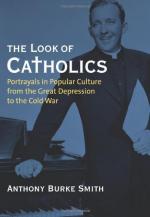|
This section contains 446 words (approx. 2 pages at 300 words per page) |

|
Little Orphan Annie, which has been appearing in newspapers since 1924, is one of the most famous comic strips in history. Created by Harold Gray (1894–1968), it revolves around the adventures of a feisty, red-haired orphan girl who travels across America, meeting every challenge with grit and resourcefulness. In the initial story line, billionaire industrialist Oliver "Daddy" Warbucks adopts Annie. Their relationship became central to the strip as Annie and her father were constantly being separated and reunited.
Gray was a staunch conservative and one of the first artists to inject politics into the comics page. Through Little Orphan Annie, he preached a philosophy of rugged individualism and traditional values. Within his melodramatic tales of Annie's exploits, Gray included attacks on the New Deal, income taxes, welfare, and the government's interference with big business. Both Annie and Warbucks continually preached the value of self-reliance. In 100 Years...
|
This section contains 446 words (approx. 2 pages at 300 words per page) |

|




